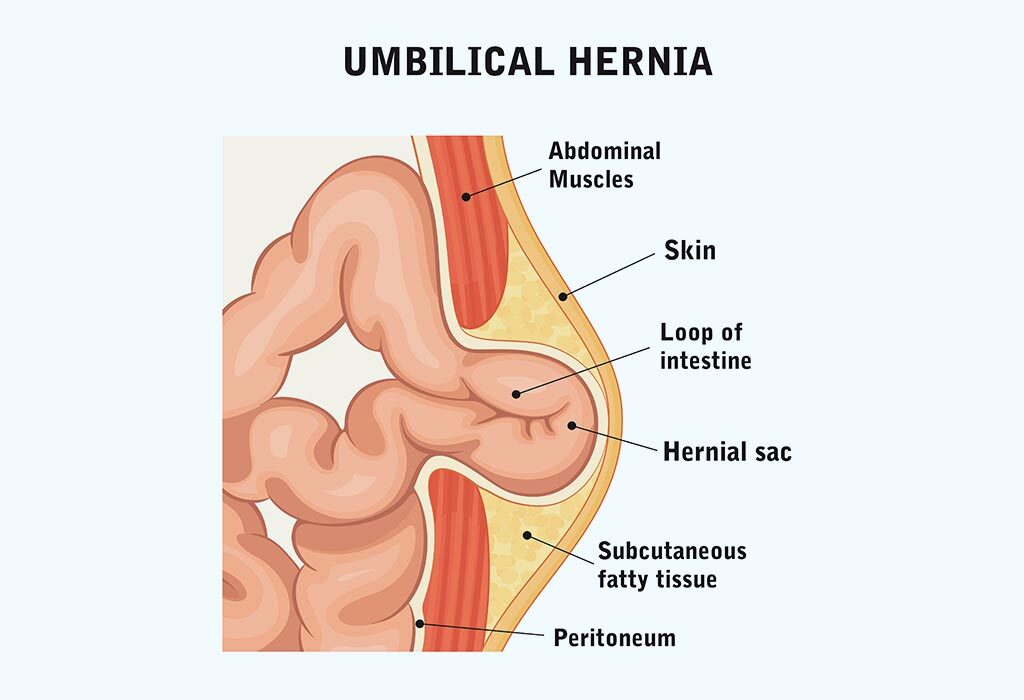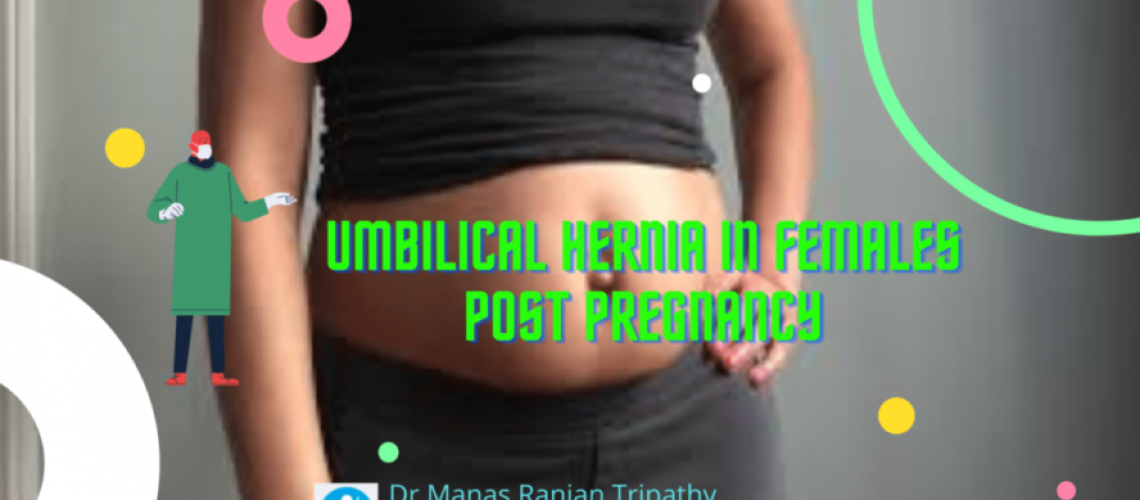Welcoming the baby to this world and holding him in the arms is one of the most overwhelming feelings a woman can experience. But motherhood comes with its own share of pains. You may feel pain because of several reasons, even after your baby is born. One of the reasons for post-delivery pains can be post partum umbilical Hernia.
A hernia is defined as a condition where an internal organ or a tissue bulges out through a weak opening in the abdominal muscles. Postpartum umbilical hernia may not be a life-threatening condition, but one still needs to be careful and seek medical assistance
What is post-partum Umbilical Hernia?
Post partum or post childbirth umbilical hernia is when the belly button protrudes outwards post-delivery. It may feel soft and tender to touch, and you may also be able to push it in sometimes. The most common symptom of an umbilical hernia is experiencing strain on the lower abdomen while sneezing and coughing continuously, or even while lifting heavyweights. Along with experiencing strain, protrusion also becomes prominent.

Causes
- An umbilical hernia is caused due to the excessive pressure built-up in the abdomen and pelvic area.
- Some women have a pre-existing defect in the umbilical region, which becomes apparent when they grow up and become pregnant themselves leading to umbilical hernia.
- Multiple pregnancy: If you have had twins or conceived with less time gap in between then your muscles tend to weaken, which also triggers the risk of a hernia.
- Overweight: The chances of getting an umbilical hernia is more if you are on heavier side, as it weakens the elasticity of your abdominal muscles.
- Prolonged labour: Long hours of labour during delivery can also lead to an umbilical hernia, as it strains and stretches the abdominal muscles.
- If your core muscles are not strong enough, then it might lead to an umbilical hernia. The core muscles support your spine, waist, lower back, and abdomen. So, it is important that these muscles are strong enough to support the body.
- Accumulation of fluids in the layers of the abdominal wall and abdominal organs may also lead to an umbilical hernia.
- Straining due to prolonged coughing, lifting heavy weights, or sneezing continuously can also increase the risk of an umbilical hernia.
- Previously undergone abdominal surgeries may also lead to umbilical hernia.
Symptoms of Postpartum Umbilical Hernia
- A protruding belly button, skin around the protrusion may appear reddish-blue. There is often a loosening of the skin around the affected region with an outward protrusion in women with an umbilical hernia post a C-section delivery.
- Pain and burning sensation while lifting heavy weights, coughing, sneezing or during bowel movements.
- Postpartum umbilical hernia, especially a strangulated one, may also result in nausea and vomiting. One may also have to deal with constipation and blood in motion.
- You may see visible skin symptoms as a hernia develops after around your abdomen. This type of hernia is called an incisional hernia. The skin on your belly button becomes loose and bulges out. A hernia restricts your blood flow to the intestines, which causes the skin around the affected area to become reddish blue.
Treatment for Post Pregnancy Umbilical Hernia
A hernia is a serious medical condition with dangerous effects if left untreated. So you need to consult your doctor even if you do not experience severe pain or discomfort. It can cause serious effects like uncontrollable abdominal pain, and less blood supply to your intestines. Hence, it is advisable to have an open discussion with the doctor before pursuing any kind of treatment or exercises.
Surgical Treatment
Surgical treatment is the most effective treatment for Umbilical Hernia as it strengthens the weakened muscles of the abdomen and push the tissues back to its place through surgery. You may opt for laparoscopic surgery which is less painful and more effective with minimum recovery time. The chances of re-appearance of a hernia are also very less in this case.

